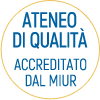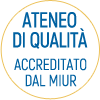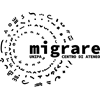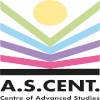Student Information Booklet
Professional opportunities
Graduates in Statistics for Data Analysis (code: L-41) may fill positions as technical statisticians and database managers in public administrations; in design and testing units of companies operating in the biomedical, epidemiological, ecological/environmental fields; in statistical units of medium-large-sized businesses; in marketing departments of manufacturing and distribution companies; in companies managing information systems; in statistical consulting companies supplying external support to private and public companies; in public and private research centres and institutes. The natural educational follow-up for this Program is a Second Level Degree in Statistical Sciences (LM-82) or in Statistical and Actuarial Sciences (LM-83); upon acquisition of some further credits, graduates of this Program may enrol in the Second Level Degree in Economics.
Educational objectives
A recent survey on the demand for higher education carried out by the University of Palermo highlighted the need for professional experts in the production and management of quantitative and qualitative information, and the full utilisation of the information assets of companies and institutions, to support management and evaluation of decisions effectiveness. The First Level Degree in Statistics for Data Analysis aims at forming graduates with an appropriate background in the fields of Mathematics, Statistics and Computing, capable of working in different areas with autonomy and responsibility and entering the labour market as qualified experts. Graduates will be able to produce and manage information flows and to use computer systems and networks to gather and analyse such information, extracting strategic indications to be shared at the appropriate level of aggregation through the most suitable technological means. The Program syllabus is characterized by:
- Core educational activities in the fields of Computer Science, Mathematics, Statistics and Probability, providing students with a satisfactory command of general scientific methods and contents;
- An educational path that aims at providing competence in Statistics and in its different fields of application. Students will therefore acquire a sizeable amount of credits in three out of the five areas: Statistics, Applied Statistics, Demography, Economics and Business Economics, Computing and Mathematics;
- A range of integrative activities, and other activities related to the L-41, divided into three groups: the first two groups consist of subject areas which are already included in the L-41 specific activities (Economics and Business Economics), and the third group consists of disciplines aiming at integrating the graduates’ background. These latter disciplines refer either to specific application fields, like the health sciences, or cross-subjects, such as basic legal competences;
- The possibility of improving or increasing language skills through a course aiming at providing both General English and English for Specific Purposes language skills (related to the professional area);
- A teaching methodology based not only on front classes, but also on laboratories, where theoretical notions will be integrated by case studies, and topics of economic-social interest will be investigated. Laboratory activities aim at developing general and applied statistical skills, also through the direct discussion with professionals, with the goal of identifying constraints and opportunities statisticians may have in different application areas. In so doing, students will be encouraged to develop appropriate analytical skills, based on a solid methodological background, which will lead them to pay constant attention to the process of data production, conceptualization, definition and measurement – and to a critical use of theories and methods with respect to the type and meaning of available information;
- A limited number of courses, and hence examinations, reached through a calibrated distribution of contents over the different course and the attribution of a sizeable number of credits (usually 8 or 10) to each educational activity requiring a final examination;
- The possibility of attending on-the-job training in private or public organizations, awarded with 8 to 14 credits. The latter option is suggested to students wishing to conclude their Program with an undergraduate degree. Those who wish to continue their education at postgraduate level may substitute the on-the-job training with other educational activities related to the postgraduate Program of their choice, in accordance with the procedures defined by the Program regulations.
Final examination features
The final examination consists of a technical report concerning the on-the-job training activity or a short essay on a topic agreed with a Professor. The operational details are described in the Final examination Program regulations.





























